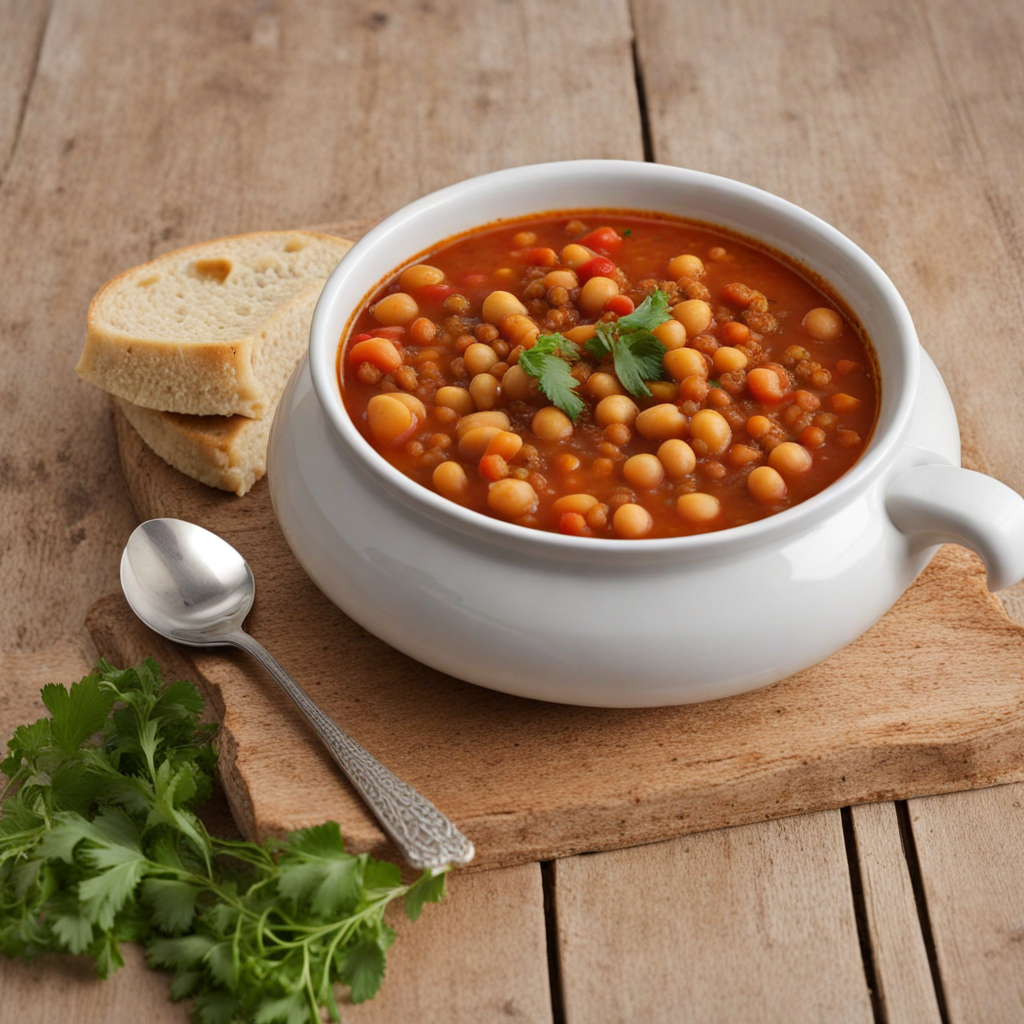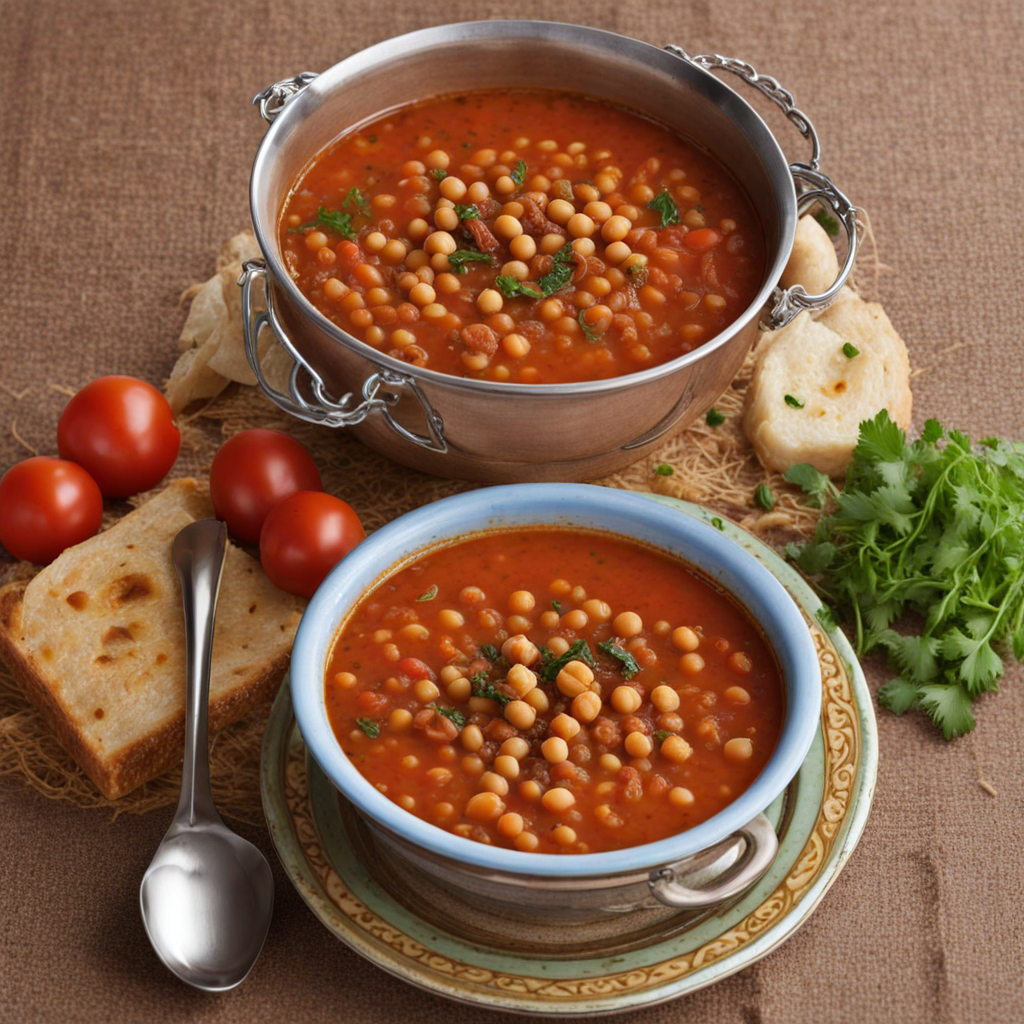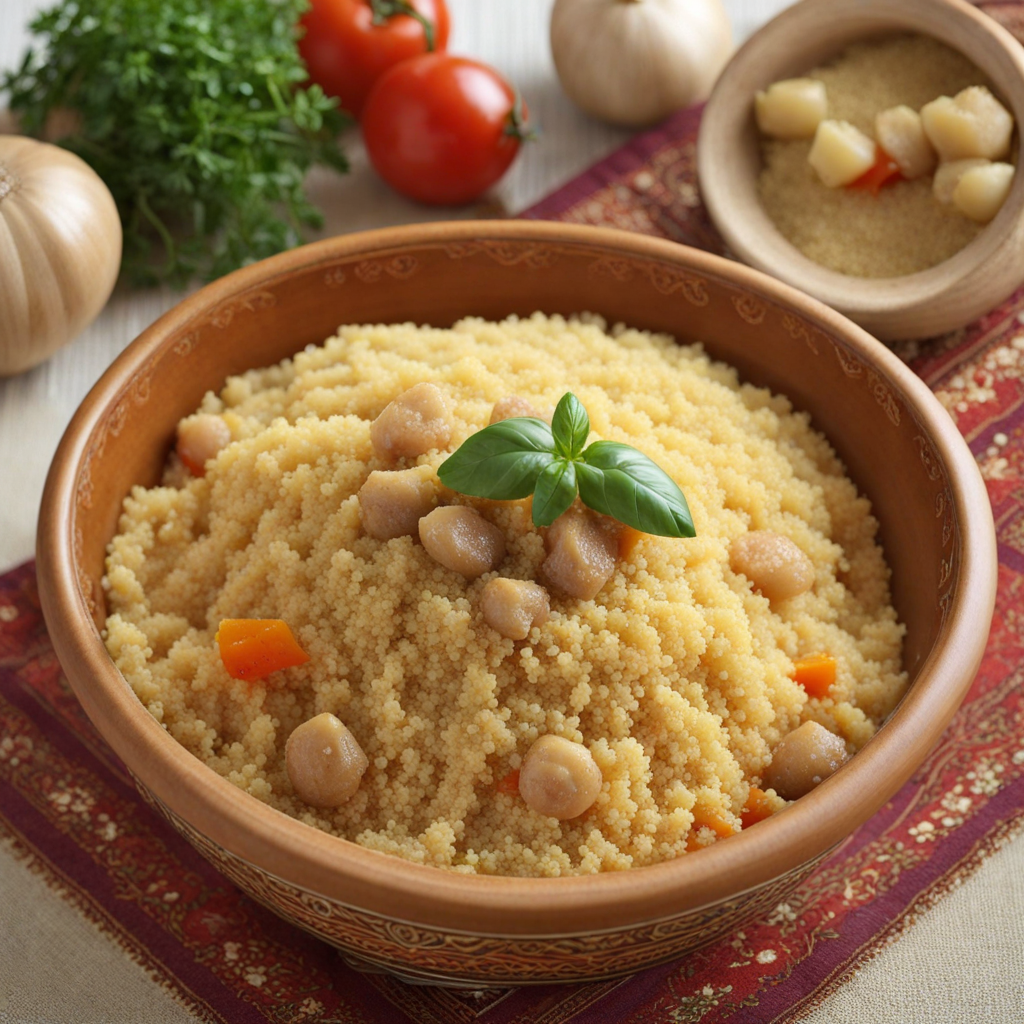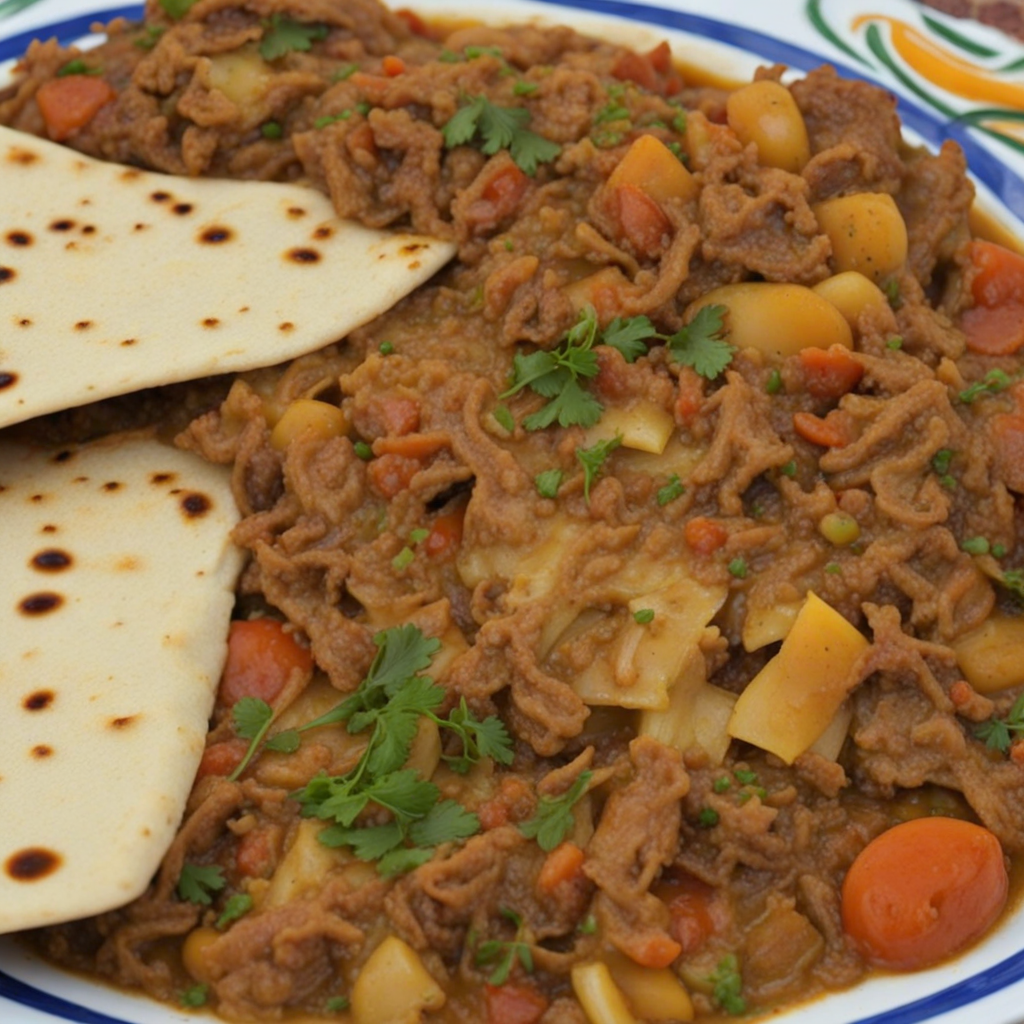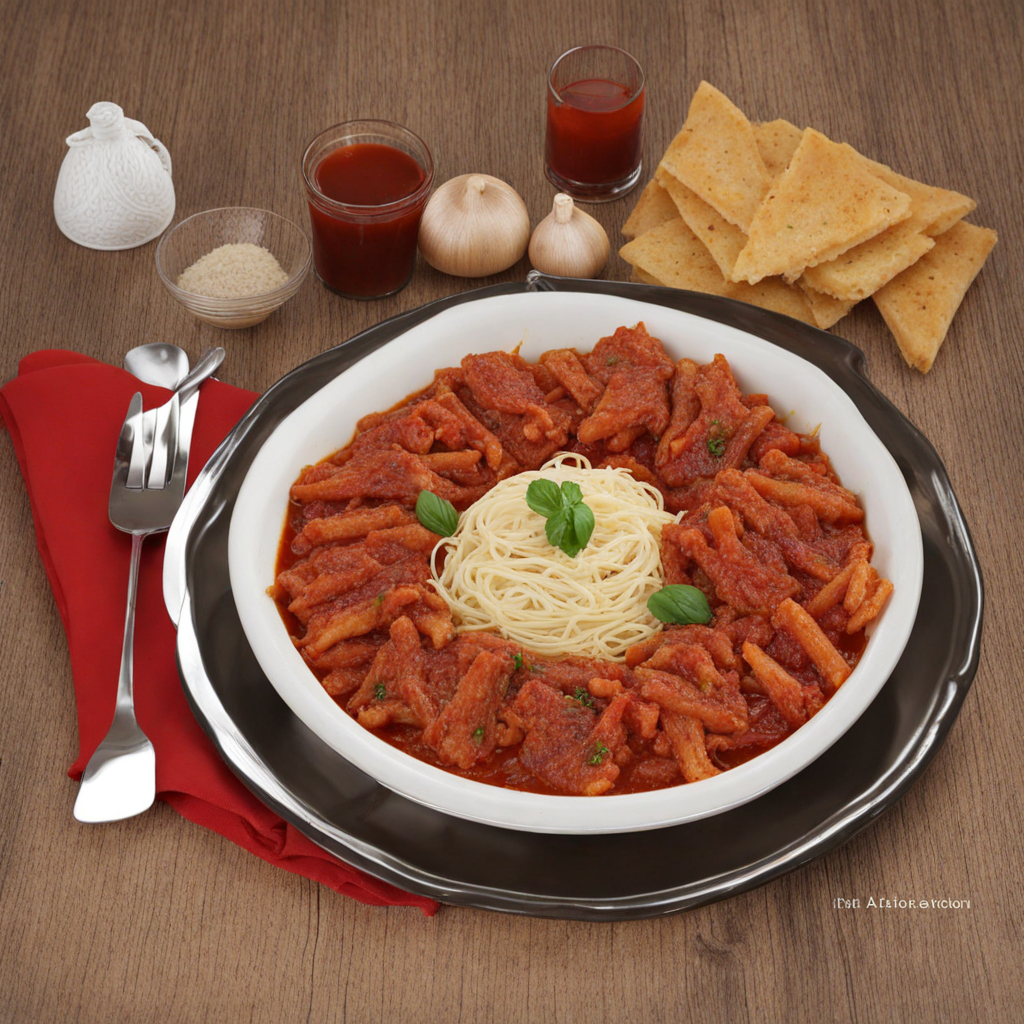Harira
Harira is a traditional Algerian soup that embodies the rich culinary heritage of the region. This hearty dish is typically prepared with a blend of tomatoes, lentils, chickpeas, and a variety of spices, creating a vibrant and flavorful experience. The base of the soup is often enriched with tender pieces of meat, such as lamb or beef, which add depth and richness to each spoonful. Fresh herbs like cilantro and parsley are commonly used to enhance the aroma, while a hint of lemon juice can be added just before serving to brighten the dish, making it a comforting and nourishing option, especially during colder months or during Ramadan iftar. The texture of Harira is a delightful balance between smooth and chunky, thanks to the combination of pureed tomatoes and whole legumes. Each bowl offers a symphony of flavors, with the warm spices—cumin, cinnamon, and ginger—imparting a warmth that envelops the palate. The soup is often served with dates or sweet pastries on the side, creating a perfect harmony between savory and sweet. It is not only a staple for everyday meals but also a dish that brings families together, often shared during special occasions and gatherings. In Algeria, Harira is more than just a meal; it represents hospitality and tradition. The preparation of this dish can vary from family to family, with each cook adding their unique twist. Some might incorporate additional ingredients like rice or vermicelli to make it even heartier. Enjoying Harira is an immersive experience, inviting you to savor the complexities of its flavors while experiencing a piece of Algerian culture in every bite.
How It Became This Dish
The Rich History of حريرة (Harira): A Culinary Gem of Algeria #### Origins and Early Influences Harira, a traditional soup that is deeply cherished in Algeria, particularly during the month of Ramadan, boasts a rich tapestry of history that reflects the complex cultural influences of the region. Its origins can be traced back to the Berber and Arab cuisines that have shaped North Africa over centuries. The Berbers, the indigenous people of Algeria, had a profound impact on the region's culinary practices, utilizing local grains, legumes, and herbs to create nourishing meals. The name "harira" itself is derived from the Arabic word "حَرِيرَة," which means "silk," signifying the soup's smooth and velvety texture. Harira's earliest iterations likely emerged from the simple need for sustenance. With a base of tomatoes, lentils, chickpeas, and a variety of spices, it was an ideal dish for sustaining energy during long fasting days, especially in the hot climate of North Africa. As trade routes expanded and various civilizations crossed paths, such as the Romans, Byzantines, and later, the Ottomans, diverse ingredients and culinary techniques were introduced. The inclusion of spices like cinnamon, cumin, and coriander reflects this cultural amalgamation, transforming harira into a dish that not only nourishes but also delights the palate. #### Cultural Significance Harira is more than just a soup; it represents a significant cultural symbol in Algerian society. Its most prominent role is during Ramadan, the holy month of fasting for Muslims. When the sun sets, families gather to break their fast with harira, often accompanied by dates and sweet pastries. This ritual is not just about sustenance; it is a celebration of community, family, and faith. The soup serves as a comforting reminder of home and togetherness, with each region in Algeria adding its unique touch to the recipe. In addition to its significance during Ramadan, harira is also a dish for special occasions, weddings, and communal gatherings. It is often prepared in large quantities and served to guests, symbolizing hospitality and generosity. The preparation of harira is typically a communal activity, where family members gather in the kitchen, sharing stories and laughter while chopping vegetables, stirring the pot, and seasoning the broth. This communal aspect of cooking reinforces social bonds and cultural identity. #### Ingredients and Variations The traditional recipe for harira includes a variety of ingredients, making it a versatile dish. The base usually consists of tomatoes, lentils, chickpeas, and a mix of fresh herbs, such as cilantro and parsley. The addition of meat, often lamb or beef, enhances the flavor and provides protein, although vegetarian versions are also common. Spices such as turmeric, paprika, and black pepper create a warm, aromatic broth that tantalizes the senses. Over time, regional variations of harira have developed, showcasing local ingredients and culinary practices. For example, in the coastal regions, seafood might be incorporated, while in the mountainous areas, wild herbs and foraged greens could find their way into the mix. Each family may also have its own secret ingredient or technique passed down through generations, further enriching the dish's diversity. #### Evolution Through Time As Algeria moved through various historical phases—colonialism, independence, and globalization—harira adapted to reflect the changing landscape. During the French occupation (1830-1962), traditional foods like harira faced challenges as French culinary practices permeated Algerian society. However, harira remained a symbol of resistance, preserving Algerian identity amidst foreign influences. It became a dish that not only represented sustenance but also cultural resilience. Post-independence, harira experienced a revival as Algerians sought to reclaim their culinary heritage. The soup was embraced not merely as a staple dish but as a national emblem, celebrated during national holidays and cultural festivals. In contemporary Algeria, harira has also found its place in a global context, with Algerian diaspora communities introducing the dish to new audiences, thus expanding its reach and appreciation. In recent years, the rise of social media and food blogs has spurred interest in traditional Algerian cuisine, including harira. Recipes are shared and adapted, often blending traditional methods with modern culinary techniques. This evolution demonstrates harira's ability to remain relevant and beloved, bridging the gap between past and present. #### Conclusion: A Living Tradition Harira is more than just a soup; it is a living tradition that encapsulates the history, culture, and resilience of the Algerian people. From its humble origins as a nourishing meal for the fasting to its significance in communal gatherings, harira represents the heart of Algerian hospitality and culinary pride. Today, as Algeria continues to navigate the complexities of modernity while honoring its rich heritage, harira stands as a testament to the enduring power of food as a medium of cultural expression. Each bowl of harira served during Ramadan or at family gatherings resonates with stories of ancestors, flavors of the land, and the deep-rooted relationships that shape Algerian society. In essence, harira is not just a dish; it is a narrative of a people, a celebration of identity, and a reminder of the warmth of home. As it continues to evolve, it will undoubtedly remain a staple of Algerian kitchens, a source of comfort, and a symbol of unity for generations to come.
You may like
Discover local flavors from Algeria


